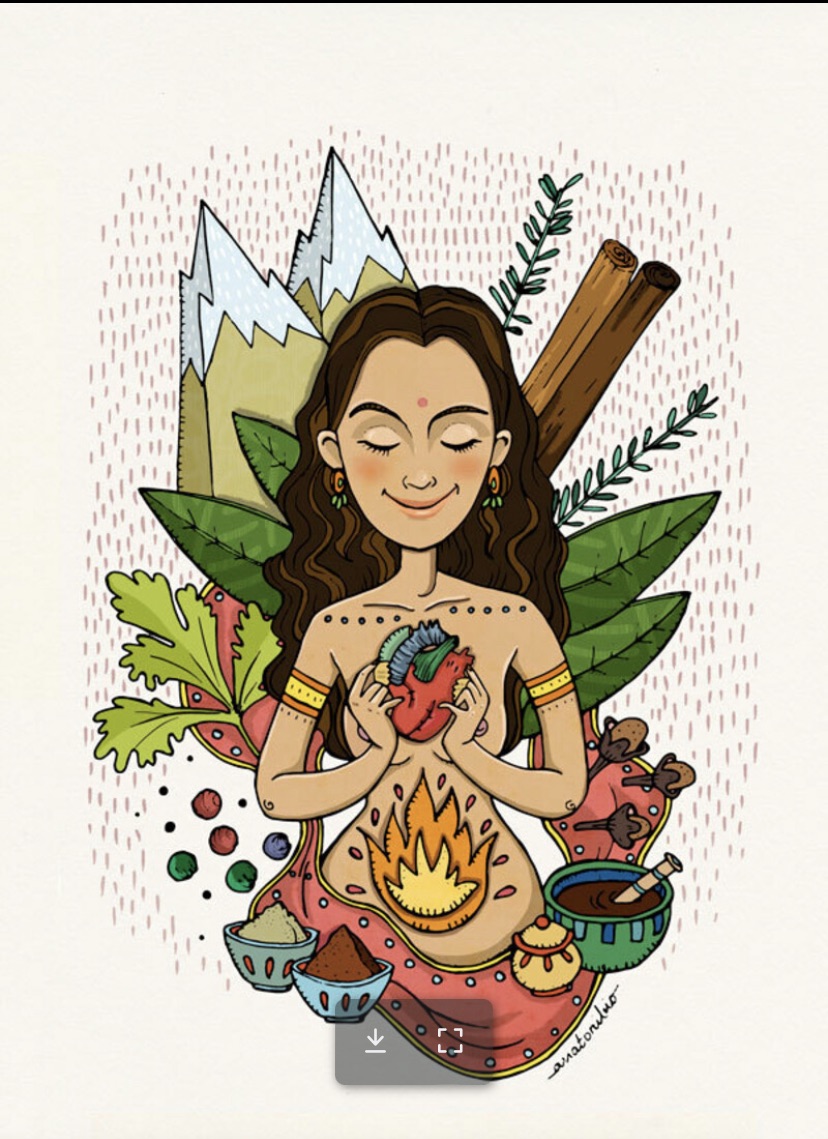Art-Veda -> A Modern Evolution On the Ancient Science of Ayurveda
- Whole Systems Fialkoff22
- May 8, 2023
- 4 min read
Being born in the 2000’s means many things that would be incomprehensible to the ancient human, but in the perspective of health and medicine, we have moved far away from the languages of understanding which embedded civilizations since human existence. What did all of these systems of health have in common? Elements of nature were interwoven and living in harmony with universal principles, natural rhythms, and the use of plants and spirits for healing were pervasive amongst all traditional cultures.
With the evolution of mechanized science comes our dependence on the physical, the immediate, and the facts. Science has allowed us to dissect, provide evidence and research extensively to develop drugs.
Image copyright artstation (Ana Toribio
What is missing essentially in this system is the patterning by which medicine follows. The modern medical system chases symptoms, after they have progressed. When immediate symptoms occur, repression of symptoms through medication subdues the visible component of the onset of illness. We have solved one problem but in turn have succumbed to a dependency on doctors as gods and medicine as lab-developed synthetic pills which temporarily remove immediate symptoms, but divorce from causation and from knowing our own body's.
Pathology in traditional healing is a path or process of developing understanding of a root cause. In having an understanding of the path of a disease, perhaps there in, lyes a solution which is long term and consequential, therefore eventually eliminated. According to traditional healing systems such as Ayurveda, a symptom is a messenger from the body, a system that is letting the brain know that something isn't functioning as it should. A symptom is also a clue to the path of pathology, of where the system is out of balance and also a constitutional clue to the individual's weak areas.
Image copyright of themadeshop.com
The artist who created this work, is an ayurvedic practitoner, and quotes, "as above so below, as within, so without." My interpretation of this is how ayurveda looks to the processes within the natural world, within the energy systems of the planets, and the macro systems that govern our environment. These same systems live within us and adhere to the same universal principles.
WHAT IS A CONSTITUTION…(OR A DOSHA)
In Chinese medicine the term constitution refers to a prakriti in ayurveda. It is the basis of our body which we come with at birth, which makes us unique and individualized. For this reason, within each dis-ease or imbalance, the constitution of the individual is assessed to identify the source of an issue. Prakriti in Ayurveda is the nature or essence someone is born with, which is unchangeable and stays with them through life. A vikriti differs in that it is someone's current state, which can be expressed as an imbalance. A dosha is someone's primary body-mind type, which can fluctuate, and also can express itself as an imbalance during one's life, depending on how and where that person lives. Dosha’s direct translation is disease. A dosha is an important aspect of understanding an individual, as the more a dosha is expressed, the more the dosha is out of balance. Reducing a dosha is the goal, to create a homeostatic state within an individual. This forms the basis of understanding an individual in treatment in Ayurveda. (image copyright: yogapedia)

Before any treatment protocol, a complex assessment, as well as self reflection and observation from the patient/client and the wellness advisor is needed to know the Prakriti, Vikruti, and dosha. Once these are established, the stance of the practitioner is more of observer, questioning, pairing information, and almost posed as a health detective. This concept is very different from one's experience within a modern health setting, where the doctor often is on a computer and makes little contact with a person, and the individual may not be addressed in patenting or labeling someone with a disease and then a medication.
Because of this stark contrast in style of practice, anyone interested and willing to be treated by a traditional health system must be prepared for the following:
+Patience: natural healing takes time, addresses layers of healing and often detoxing, changing of lifestyle habits, diet.
+ Willingness to change and self reflect, as well as commit. Because these changes aren’t overnight, they may take longer but are potentially sustained with the commitment
+ Change in Mindset: Prevention vs Illness→ Being open to an understanding that ayurveda targets to treat imbalance at its root cause, before the imbalance develops into a full blown disease
+ Willingness: To address things from one's past, and present which may be preventing the individual from thriving
This is an introduction into the mindset of traditional healing. When I did a year of study of Ayurveda, one of the mind blowing elements that stood out, was what a difference in perspective, that we really see the body as a set of interdependent systems. In addition, the mind-body concept, where the 2 are synonymous and constantly influence each other.
Within this concept, the energetics of medicine/healing, whereby all imbalance starts with energy. There are 5 stages of disease in ayurveda. Understanding the progression of imbalance and how it progresses into illness and then disease is monumental in a platform of prevention.
So many diseases that are chronic across the US can be prevented with this shift in mindframe and focus on prevention of illness.






Comments